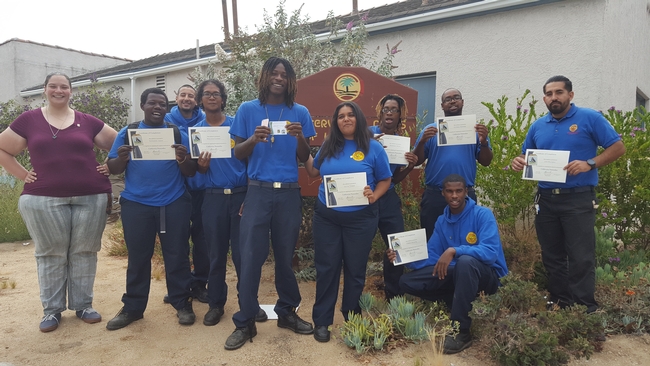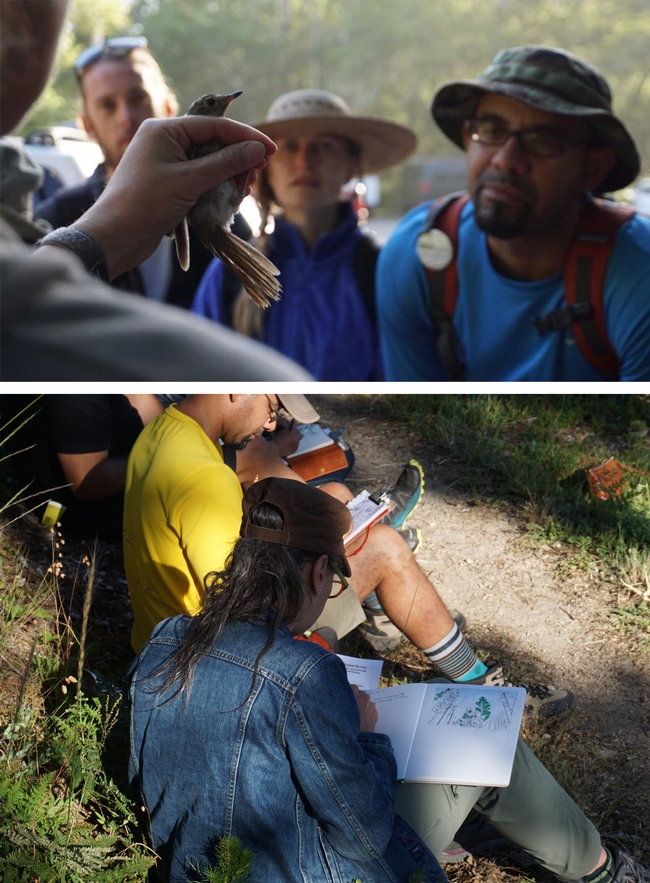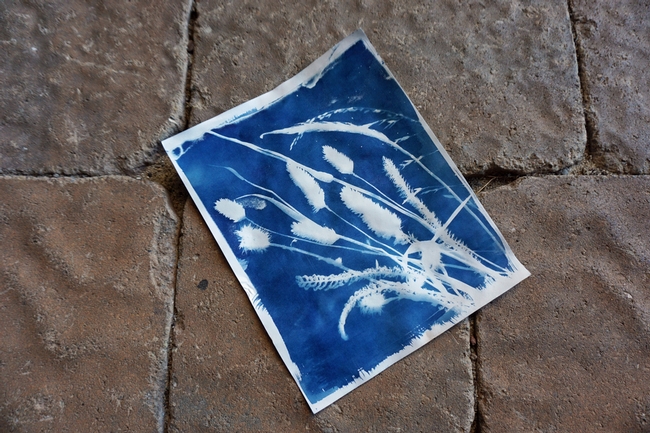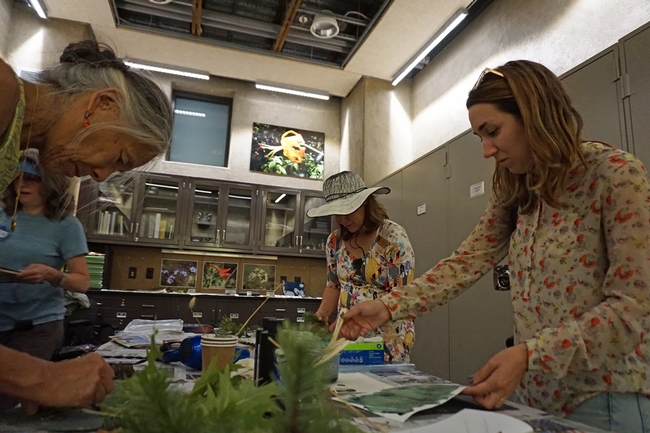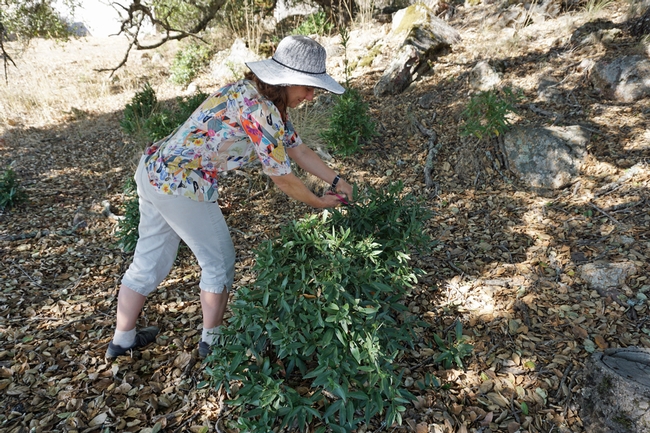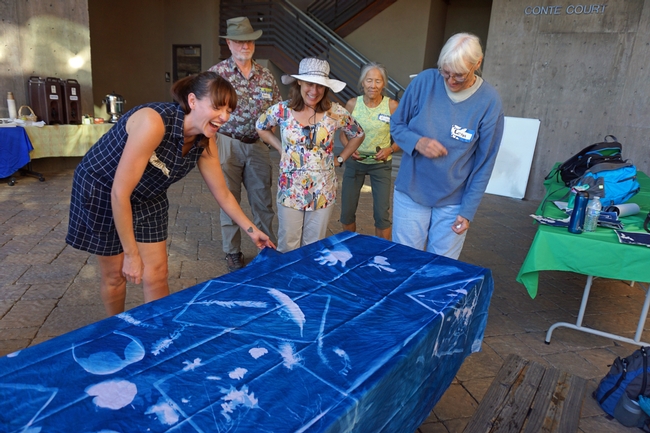Posts Tagged: nature
Pollinator Habitat: Important Part of Solar Energy Study
Solar energy should not only be used to benefit global sustainability, but to protect our global ecological systems, including climate, air quality,...
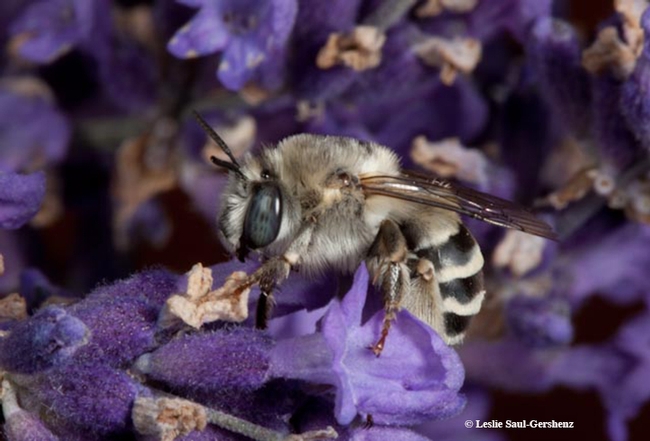
Solar energy can be used to protect pollinator habitat, according to a research paper published July 9 in the journal Nature. This is Anthophora urbana, a ground-nesting solitary bee which has a broad distribution including the Mojave Desert. It is a floral generalist collecting pollen and nectar from many species of plants, says UC Davis entomologist Leslie Saul-Gershenz. (Photo by Leslie Saul-Gershenz)
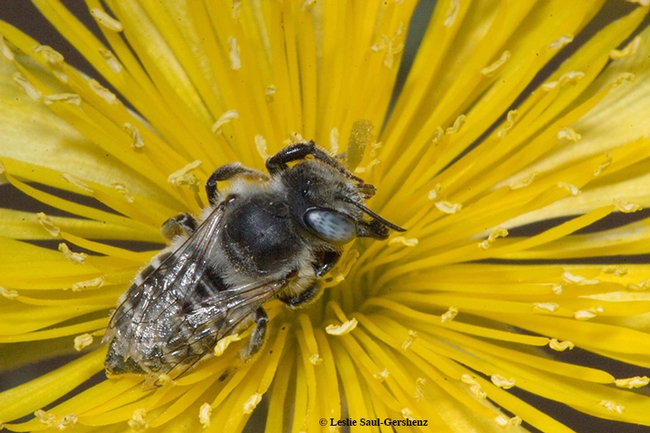
Native bee Megachile sp. on Mentzelia flower in the Mojave Desert. (Photo by Leslie Saul-Gershenz)
Shedding New Light on Honey Bee Chromosomes
Honey bee geneticists with long ties to UC Davis are putting together those missing pieces of the puzzle involving bee chromosomes. Newly published...
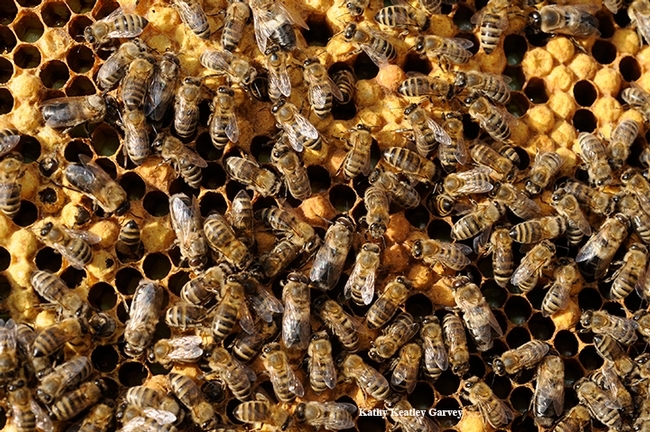
"The honey bee genome,” Robert Page Jr. explained, “is composed of about 15,000 genes, each of which operates within a complex network of genes, doing its small, or large, share of work in building the bee, keeping its internal functions operating, or helping it function and behave in its environment. (Photo by Kathy Keatley Garvey)
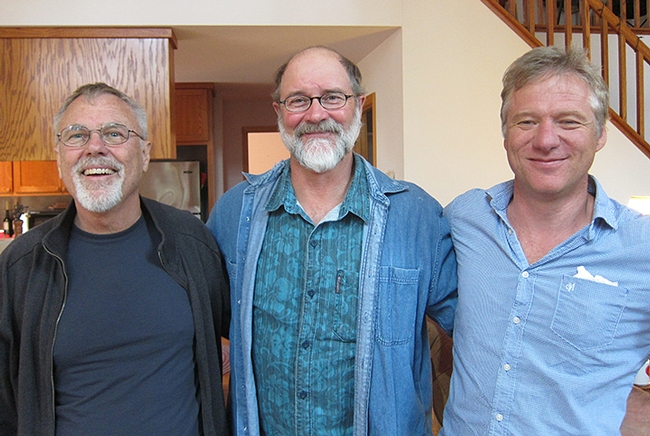
Honey bee geneticist Robert Page Jr. (left) with colleagues: bee breeder-geneticist Kim Fondrk of UC Davis, and Martin Beye, former postdoctoral fellow in the Page lab and now a professor at the University of Düsseldorf, Germany.
Expanding access to the California Naturalist community
Since the inception of the California Naturalist program in 2012, we have been committed to embracing inclusion in all its forms and creating an open, diverse, and equitable community. It is embedded in our mission to foster a diverse community of naturalists and promote stewardship of California's natural resources through education and service. With 10 bioregions and over 39 million people, California is a diverse state naturally and culturally, and we are striving to provide greater access for underserved populations to this new statewide education and service program.
There are several ways in which we're addressing this critical work. One approach is identifying gaps in who we're reaching so we can prioritize filling those gaps. Using GIS to integrate environment, health and socioeconomic data from Cal Enviroscreen, the program prioritizes gaps in our geographic coverage and areas with the most disadvantaged communities.
To reach these communities we are working to expand partnerships with community colleges and organizations offering workforce development. California Naturalist certification can be integrated into a college course and to engage students embarking on their careers or those learning new skills for a change in career or work. For example, Pasadena City College offers certification as a part of their field biology class. Students gain valuable hands-on experiences, build their resume, and make connections to the wider naturalist community.
We also work with institutions that focus on training young underserved adults. For instance, Mountains Recreation and Conservation Authority (MRCA) in Greater Los Angeles incorporated California Naturalist into “Bridge to Park Careers,” a competitive 20-week training program that equipped young adults from urban areas with knowledge and multiple certifications needed to secure jobs as educators and naturalists with park agencies. We maintain this program partnership with nonprofit Community Nature Connection, who continues the educational programming previously conducted under MRCA.
Finally, scholarships are available in many locations to cover program fees for participants. To further increase scholarship opportunities, we are excited to announce our newest initiative, the California Naturalist Scholarship Fund. The fund will help break down barriers people face in accessing the program, off-set course participation costs, and ultimately build a more inclusive community of naturalists. In 2016, 29 percent of California Naturalist course participants and 21 percent of statewide conference attendees received a need-based scholarship to attend courses and training events.
2018 holds much promise for strengthening our commitment to inclusion. As we enter the holiday season and prepare for the new year, please consider giving the gift of knowledge and the spark of curiosity. Together we can help protect and preserve nature by engaging more Californians in stewardship, discovery, and action.
UC California Naturalists interpret nature with art
Art is an expression of creativity, a conveyance of beauty, and for naturalists, it is a way to process, remember and interpret nature.
Many branches of nature art are popular, such as photography, painting and sketching. The UC California Naturalist Regional Rendezvous in October introduced an old but uncommon method for documenting natural objects – cyanotype.
At the CalNat Rendezvous at the Pepperwood Preserve, Santa Rosa artist Jessica Layton taught the cyanotype process to volunteers certified by the UC California Naturalist program, giving them a new tool to use in educating and engaging children and adults in conservation organizations they work with around the state.
The cyanotype process begins by mixing two chemicals - ferric ammonium citrate and potassium ferricyanide – to create the blue photo reactive solution. The chemicals may be purchased at art stores and online by searching for cyanotype solutions.
Once blended, the chemicals are painted on paper or cotton cloth and allowed to dry. Leaves, grasses, seeds, pine cones, flowers, stones – any number of natural objects collected outside may be artfully arranged on the blue background and, if needed, held in place with a pane of glass.
The project is then set out in bright sunlight for 5 to 7 minutes, brought back inside to be washed in clean water and allowed to dry. The areas of the paper or cloth exposed to the sun are a radiant lapis blue; the areas that were shaded by the natural objects appear in silhouette.
“I have come to appreciate art as a way to improve observation skills and deepen an appreciation for nature,” Merenlender said. “We offered this session to our volunteers for them to improve their capacity and become better naturalists.”
Meet Big Red, the Flameskimmer
Big Red visited us for four consecutive days. The red flameskimmer dragonfly, Libellula saturata, zigged and zagged into our pollinator garden in...
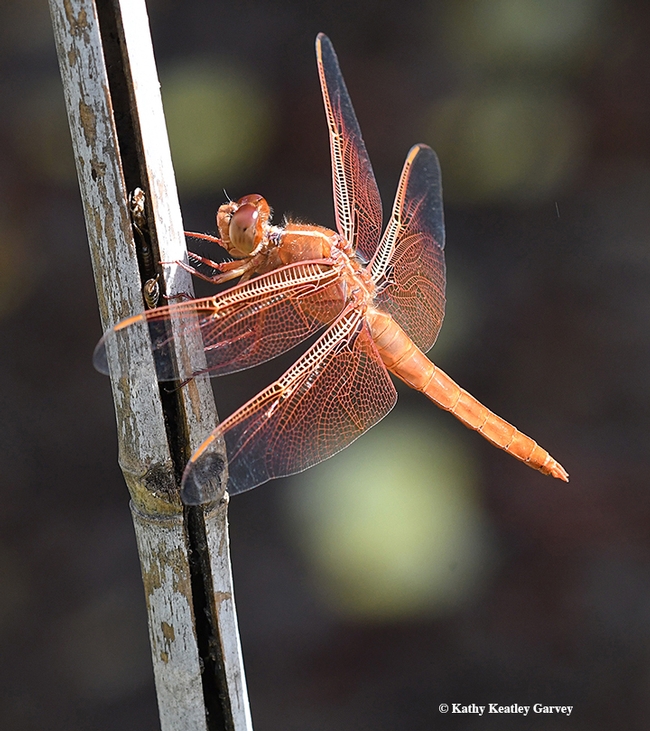
A red flameskimmer, Libellula saturata, perches on a bamboo stake. Note the nesting earwigs and bees in the split stake. (Photo by Kathy Keatley Garvey)
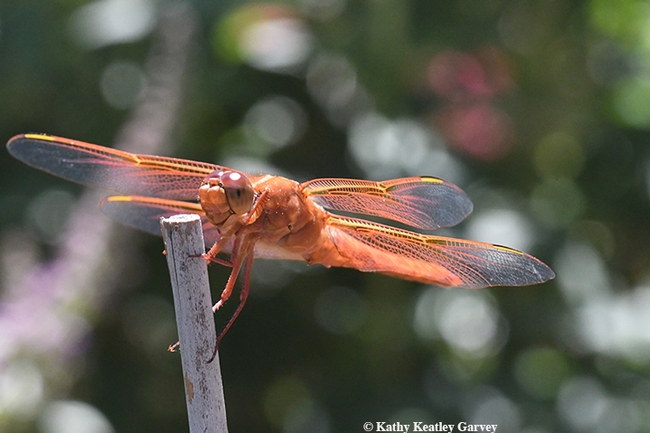
A red flameskimmer, Libellula saturata, sparkles in the sun. (Photo by Kathy Keatley Garvey)
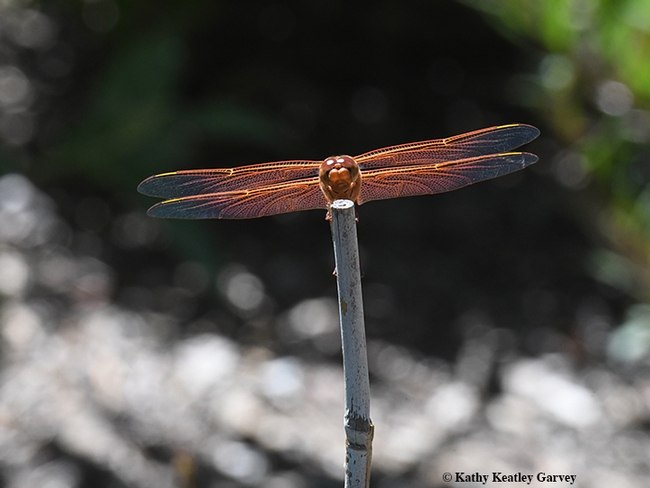
Helicopter? No, a red flameskimmer, Libellula saturata, glimmering in the sunlight. (Photo by Kathy Keatley Garvey)
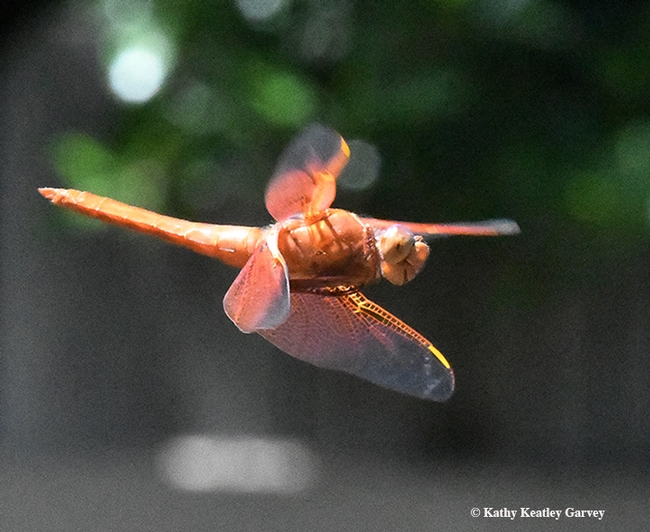
A flameskimmer,Libellula saturata, in flight. (Photo by Kathy Keatley Garvey)


